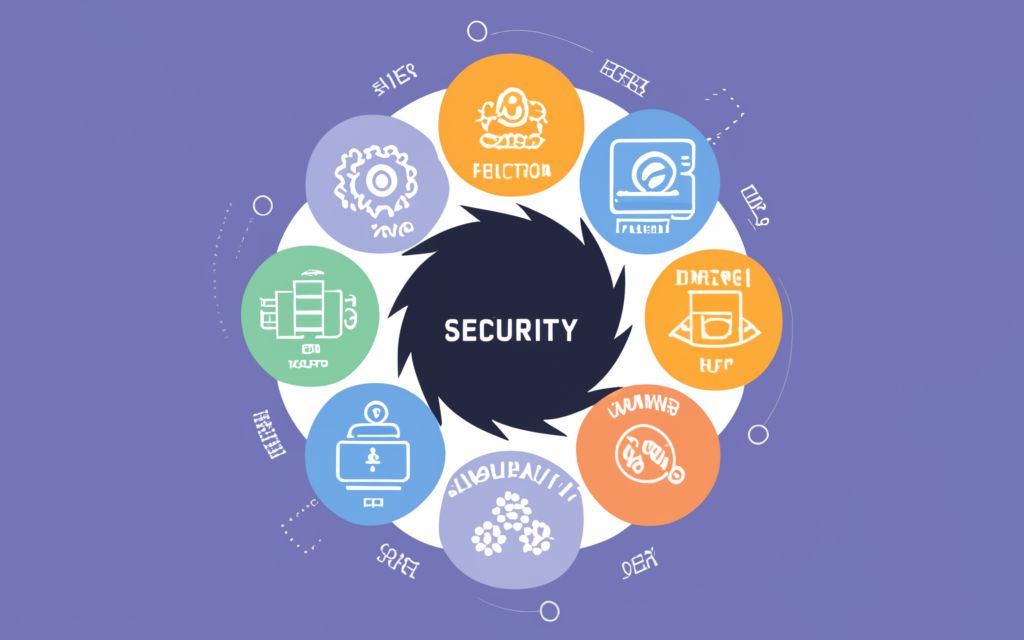As cryptocurrency adoption accelerates, high-value token holders and blockchain networks face intensifying threats from sophisticated hackers and fraudulent actors seeking to exploit security gaps for financial gain. From supply chain attacks on wallet manufacturers to nation-state espionage campaigns targeting DeFi protocols, the expansion of points vulnerable to breach in the ballooning crypto ecosystem enables evermore attack vectors.
This comprehensive guide arms cryptocurrency owners with an overview of best practices for hardening security infrastructure against escalating attacks. We outline robust cryptography, access control, monitoring, and threat intelligence tactics to reinforce vulnerabilities across devices, internet activity, storage solutions and account access admin rights. Consider these protocols the digital equivalent of fortifying a castle in preparation for impending sieges by those intent on forcing access into the crypto kingdom’s coveted data and coin vaults.
Importance of Cryptocurrency Security Infrastructure Resilience
The disruptive premise of permissionless and trustless cryptocurrency transactions depends wholly upon fortifying systemic security and user access protocols against subversion. Lacking adequate safeguards invites attacks that destabilize faith in foundational cryptography principles. It also causes account breaches inflicting steep financial and psychological devastations upon holders now vulnerable to blackmail schemes demanding payoffs in return for not publicly leaking sensitive personal data indelibly logged on the blockchain.
By cultivating resilient security architecture encompassing backups, access controls, threat monitoring and rapid response preparedness, cryptocurrency custodians meaningfully enhance asset protection odds. Investing in proper security infrastructure also upholds positive community-level externalities through establishing herd immunity and reducing ecosystem vulnerability footprints.
Establishing Unbreachable Account Access
The easiest but most damaging cryptocurrency theft tactic involves compromising access credentials via phishing or brute force attacks. However, implementing the following protocols significantly frustrates such breach efforts:
- Multi-factor authentication (MFA) mandates multiple credential types blocking single point failure risks
- Hardware security keys enable passwordless MFA convenience foiling phishing exploits
- Password manager apps generate unique, complex passwords across sites preventing guessing attacks
With rigorous identity access principles governing account logins, significantly greater upfront resource investments become necessary for criminals to attempt gaining even basic account access.
Secure Cryptocurrency Asset Custody Protocols
Just as robust home security interweaves strong perimeter access with interior asset controls, cryptocurrency defense similarly prioritizes complementary wallet and backup recovery protections:
- Hardware wallets provide ultra secure personal storage through encrypted offline devices foiling remoting hacking
- Paper wallets enable transfers via printed QR codes immune to digital theft vectors
- Multisignature wallets mandate multiple owners approve transactions enhancing oversight
For backing up access recovery credentials, experts recommend:
- Storing recovery phrase passcodes offline after validating correctness
- Never digitally transmitting or emailing recovery phrase screenshots
- Applying redundancy across geographically distributed locations
- Using durable mediums like metal plates for etched mnemonic phrases
- Securing locations with discreet but accessible containers
By upholding these infrastructure security best practices, cryptocurrency assets remain guarded through concentric protections across transaction endpoints, storage vehicles and backup contingencies.
Shielding Network Transmissions
While access and storage security controls prevent most attacks, layered network transmission protections utilizing encrypted VPN tunnels, secure browsers, and traffic monitoring provide additional cryptography barriers:
Virtual Private Networks (VPN)
Encrypted tunnels prevent ISPs or public WIFIs from monitoring and manipulating web traffic while concealing IP addresses.
Secure Web Browsers
Specialty privacy-focused browsers like Brave actively prevent tracking and fingerprinting through built-in TOR integration and encrypted VPNs.
Transaction Monitoring
Actively review native wallet and exchange logs to identify suspicious activities indicating possible security breaches.
Maintaining Regular Security Fortification Upgrades
Given incessant evolution of hacking techniques, cryptocurrency security demands ongoing, proactive fortification through activities like:
- Migrating assets into upgraded wallet solutions as technology improvements emerge
- Consistently patching and updating all software, apps and devices
- Frequently rotating wallet private keys and recovery phrase backups
- Expanding monitoring scope using surveillance tooling and dark web alerts
- Continuous education on crypto cyber threat intelligence
By embedding positive security hygiene habits complementing priority infrastructure controls already outlined, cryptocurrency holders sustain consistent protections across both existing and emerging threat landscapes targeting decentralized finance participants.
Top Crypto Security Infrastructure Solutions
| Security Tool | Core Protections Provided | Primary Compatibility |
| Hardware Wallets | Air-gapped cold storage, tamper-proofing, encryption | Trezor, Ledger, SecuX – Major cryptocurrencies |
| Password Managers | Secure digital vaults, password generation & storage, MFA capabilities | Cross-platform & browser support covering thousands of sites |
| Antivirus Software | Malware detection via signature matching, heuristics and machine learning, real-time monitoring | Windows, Mac, Linux, Android and iOS devices |
| Firewalls | Access controls, whitelisting, network monitoring, threat intelligence | Enterprise networks, home routers, desktops and mobile devices |
| VPNs | Encrypted tunneling, IP masking, DNS spoofing protection, security auditing | Windows, Mac, iOS and Android OS ecosystems |
Regularly upgrading security infrastructure across endpoints, networks and credential storage reinforces systematically against both existing and emerging crypto threat vectors seeking to infiltrate blockchain systems for profit or disruption.
Ongoing Vigilance as the Last Line of Defense
Despite extensive security infrastructure controls, continuously evolving threats require persistent user vigilance through developing threat intelligence, monitoring early attack indicators and evolving controls over long time horizons. Carelessness breeds complacency that crafty hackers adeptly exploit for disproportionate gains.
Acknowledge also the deep communal interdependencies binding cryptocurrency participants against threats laying siege from all vectors. Individual user security neglect fosters vulnerabilities eventually undermining global ecosystems.
Therefore, maintain positive mindsets prioritizing security awareness, best practice adoption and threat monitoring as the last line of defense against residual risks manifesting even against mathematically robust blockchain networks. Savvy users represent the decentralized world’s ultimate insurance policy by containing damages and rapidly responding to incidents even after initial infrastructure protections fail.
Together, upholding positive security principles protects not just individual holdings but contributes to establishing herd immunity essential for securing blockchain’s greater information liberation objectives now and for future generations transacting within open, transparent decentralized architectures.
FAQs
How can hardware wallets better secure my cryptocurrency holdings?
Hardware wallets provide offline cold storage through encrypted physical devices completely isolated from internet connectivity risks that software and mobile wallets retain. Private keys exclusively remain on external units.
What represents the biggest security threats to decentralized finance (DeFi) protocols?
Flaws in smart contract coding deems the foremost infrastructure vulnerability enabling hackers to siphon funds from DeFi platforms. Also, compromised random number generators critically weaken wallet key generation randomness enabling alternative infiltration vectors.
How does multi-factor authentication bolster cryptocurrency security?
By requiring multiple identity verification factors for login approval rather than singular password reliance, MFA blocks intruders lacking possession of the full credentials set even if main passwords somehow become compromised.
Which cryptocurrencies offer the greatest security infrastructure currently?
Bitcoin maintains the longest track record of sustaining its cryptography foundations without any major protocol breaches over a 13+ year timeframe. However, alternatives like Ethereum, Solana, Cardano and Polkadot also implement robust infrastructure controls centered on security.
How can individual cryptocurrency users strengthen community-level security postures?
Fostering positive security hygiene among friends and family prevents weakest link neglect that hackers exploit to infiltrate ecosystems. Also, evangelizing best practices through community forums aids mass adoption of protective measures elevating herd immunity.

